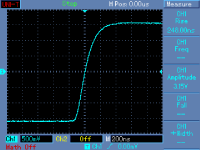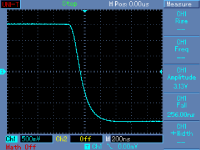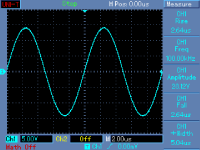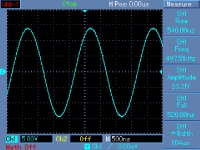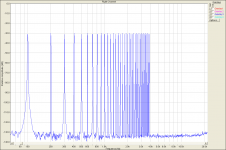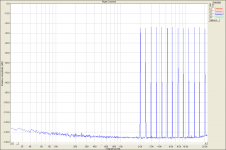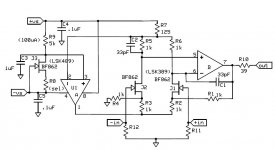The Bybee-Curl box isn't a line conditioner though, it's a snake oil product. It doesn't mention anything about dirty AC lines but how it makes the sound 3D 🙄
Sorry. I am not familiar with it at all. Obviously.
And the rest, Mr Simulation Free Zone man ... 😛
Yea yea yea 😀 It has been mentioned before, yes. A rather strong cider is now begining to take effect... I shall retire for a while

ADA4898-2
Thanks. If I get the chance latter today will post my current version of a low noise preamp power supply.
Reduces noise both to and from the AC line.
Well, you'd better have a word with that bothersome dvv, he says some strange things at times ... 😀
Yes, I do, I admit it.
On the other hand, once something is explained to me, I don't go on about it in endless loops.
If I ask for advice, and receive it, I don't ask the advisor why the hell did he make that particular choice. I am very old fashoned that way.
I do not assume all manufacturers are scoundrels and trying to part me from my money only. I sort of figure that if somebody is using a bass driver which costs a fair penny that somebody probably has a reason why he's doing that and not using a 90% cheaper Chinese unit. Sometimes, I actually understand why somebody did it just that way, and while I might not agree with his choice, I will not even try to question it. That's his choice, and besides, who's to gurantee I see the whole Big Picture the right way, what if I'm missing something?
The problem with your vew Frank is that it goes slap bang against almost everything most of us agree is not so. Sure, Columbus did that too, but I don't think we have a Columbus here just now. Although we sure could use one, Atlantis is still something of a mystery ... 😀
Well, you'd better have a word with that bothersome dvv, he says some strange things at times ... 😀
Yeah Frank ... 🙄
Yes, I'm well aware of that ... the reason is that I'm looking for a different experience from sound, I'm listening for it to persuade me that I'm not listening to a speaker, but rather to a musical event, which the speaker just happens to be part of the apparatus for making happen. Perhaps an analogy would be that most people intently watch what a musician does, precisely how he moves his hands, the angle he holds his body, the look of concentration on his face - for me, that person is irrelevant compared to what is reaching my eardrums, the texture of that sensation is what fascinates me.The problem with your vew Frank is that it goes slap bang against almost everything most of us agree is not so. Sure, Columbus did that too, but I don't think we have a Columbus here just now. Although we sure could use one, Atlantis is still something of a mystery ... 😀
I have been amazed by people listening intently to a speaker, and afterwards commenting on the excellent transient response, the evenness of the FR, and such like - all I was aware of was that the sound coming out of it was crap, like a poor cardboard cutout of the real thing - I thought, well, if that's what turns you on ...
I think that you two are quibbling with each other, when both of you have something useful to contribute here. Unlike so many other inputs. '-)
Last edited:
Quick answer ... the kick in the guts comes from the amplifier, not the speaker ...Honestly, this is nothing short of a revelation to me, Frank. Am I to assume then that speakers which do have the kick in the guts, but come short of the best high range performance are resorting to black magic, or voodoo to do the trick?
Based on Scott Wurcer's idea, I have built a new line stage, .....
Would you be kind enough to post a link to the original idea ?
Thanks,
Patrick
One of the real bits of "magic" that occur with a system when you get it completely right is that you can wind it up to the point where it is deafening, which you don't realise until someone speaks to you - then you steadily reduce the volume, down and down and down, and nothing really changes - subjectively, what is in front of you stays the same, except you are more and more 'distant' from it - this continues until it is whisper quiet, at the last notch of the volume control ... 😉
Would you be kind enough to post a link to the original idea ?
Thanks,
Patrick
I should add that it is a rearrangement of a circuit that dates from at least 1968. It is an interesting rearrangement, though. I have the original somewhere in a file but as PMA said when I posted it I noticed that the values could use a little tweaking for common mode input range. Hopefully his values are more optimal than the original.
One of the real bits of "magic" that occur with a system when you get it completely right is that you can wind it up to the point where it is deafening, which you don't realise until someone speaks to you - then you steadily reduce the volume, down and down and down, and nothing really changes - subjectively, what is in front of you stays the same, except you are more and more 'distant' from it - this continues until it is whisper quiet, at the last notch of the volume control ... 😉
There is more than a grain of truth in that Frank.
Scott,
> I have the original somewhere in a file ...
Could you post a link or send me a copy by email ?
Many thanks,
Patrick
> I have the original somewhere in a file ...
Could you post a link or send me a copy by email ?
Many thanks,
Patrick
OT alert 😀 Audio circuit question coming up.
Post #6 here,
http://www.diyaudio.com/forums/solid-state/255236-opamp-based-power-amp.html#post3929960
How good could something like this be in practice (actual compared to the sim). 0.000003% @ 1kHz 1 watt and only ten times worse @ 100 w 4 ohm.
The distortion in that sim is actually 0.000003%, I've altered the post. That many 'flippin zeros lol.
The classic current feedback
 Alexander amp. Those simulation values are absurd, probably due to very rough output mosfet models.
Alexander amp. Those simulation values are absurd, probably due to very rough output mosfet models.Patrick, I also do not remember the link now. I believe it is somewhere in the CFA thread started by Bonsai. You will have to try DIYaudio search engine.
I can post step responses, rise and fall. And full output swing at SE output mode (+OUT only).
I can post step responses, rise and fall. And full output swing at SE output mode (+OUT only).
Attachments
Last edited:
More details or perhaps a plot? Using that tone set will plant harmonics and IM products on existing tones. The tone sets on the attached spreadsheet work around that issue. The plot below is a quick loopback test of a stock EMU 1616M using a triband test.View attachment 418943
There's an ISO 31 tone spec that avoids harmonic and intermodulation products to fall in other tone's bins. Also has empty bins so you can test for noise in the presence of a complex signal.
Jan
Scott,
> I have the original somewhere in a file ...
Could you post a link or send me a copy by email ?
Many thanks,
Patrick
Here's the original (at end) but lots of good early stuff about differential amplifiers before it as well as some unusual references.
http://www.analog.com/library/analogdialogue/archives/41-01/evoloa2dataamp.pdf
Below is my original post, the gain resistor goes between the FET sources. Use PMA's resistor values since he fixed the limited common mode range in the original. If you can imagine the original (Demrow paper above) where the first two op-amps are repurposed as one for common mode elimination and one as differential gain you can place the 4 resistors around the output amp right at the input and eliminate the third op-amp. As a bonus you get a single ended output and reuse two of the common mode resistors as your gain setting network.
A note about invention, there was a stir in some quarters following the Forsell AES paper since basicly Demrow's circuit is the same but uses bipolars. I did a FET version, still have it in a notebook somewhere, as a favor to the Naval Research Labs sonar staff and that is almost exactly the Forsell preamp. Let's just be happy that good circuits happen.
Attachments
Last edited:
We need to take Idss value into account in this preamp, at least for one resitor value (R8), so there is no completely universal set.
JFETs have to be matched, to get low output dc offset.
JFETs have to be matched, to get low output dc offset.
- Status
- Not open for further replies.
- Home
- Member Areas
- The Lounge
- John Curl's Blowtorch preamplifier part II
